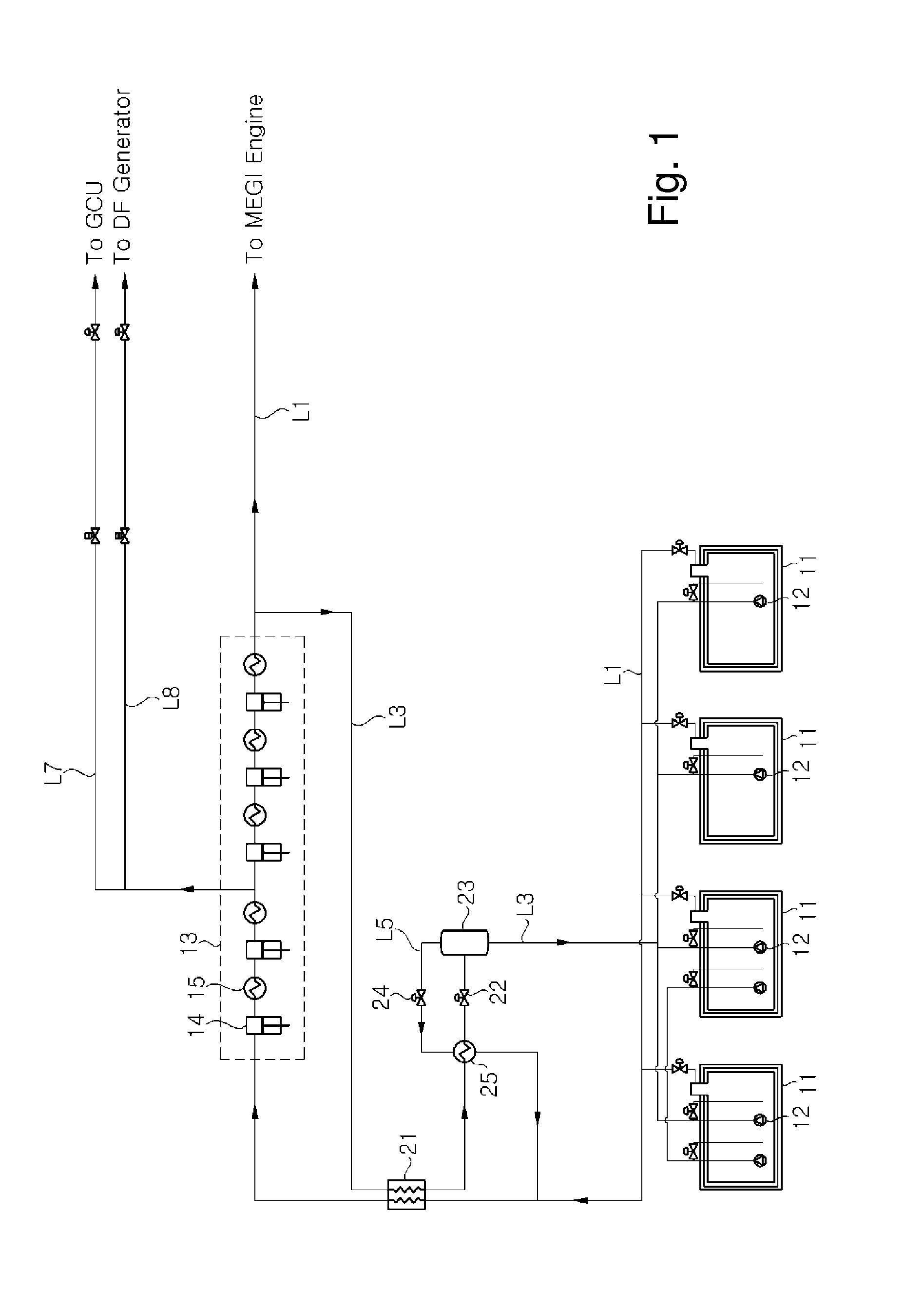System and method for treating boil-off gas in ship
a technology for treating system and vessel, which is applied in the direction of pressure vessel containers, gaseous engine fuels, non-pressured vessels, etc., can solve the problems of large amount of power consumption, complicated control of the entire system, and bog burning in gas combustion units (gcus) or in atmosphere, so as to save initial installation cost and operation cost, and reduce the amount of bog consumed in gcus or the like , the effect of saving energy consumption
- Summary
- Abstract
- Description
- Claims
- Application Information
AI Technical Summary
Benefits of technology
Problems solved by technology
Method used
Image
Examples
first embodiment
[0073]FIG. 1 is a configuration diagram illustrating a BOG treatment system for a vessel according to the present invention.
[0074]Although FIG. 1 illustrates an example in which the BOG treatment system of the present invention is applied to an LNG carrier equipped with a high pressure natural gas injection engine (e.g., an MEGI engine) as a vessel engine capable of using natural gas as fuel, the BOG treatment system of the present invention can also be applied to any type of vessels (LNG carrier, LNG RV, and the like) and marine plants (FSPP, BMPP, LNG FRU, LNG FPSO, LNG FSRU, and the like), in which a liquefied gas storage tank is installed.
[0075]In the BOG treatment system for the vessel according to the first embodiment of the present invention, boil-off gas (NBOG) generated and discharged from a storage tank 11 storing liquefied gas is transferred along a BOG supply line L1, is compressed in a compressor 13, and is then supplied to the high pressure natural gas injection engine...
PUM
 Login to View More
Login to View More Abstract
Description
Claims
Application Information
 Login to View More
Login to View More - R&D
- Intellectual Property
- Life Sciences
- Materials
- Tech Scout
- Unparalleled Data Quality
- Higher Quality Content
- 60% Fewer Hallucinations
Browse by: Latest US Patents, China's latest patents, Technical Efficacy Thesaurus, Application Domain, Technology Topic, Popular Technical Reports.
© 2025 PatSnap. All rights reserved.Legal|Privacy policy|Modern Slavery Act Transparency Statement|Sitemap|About US| Contact US: help@patsnap.com



